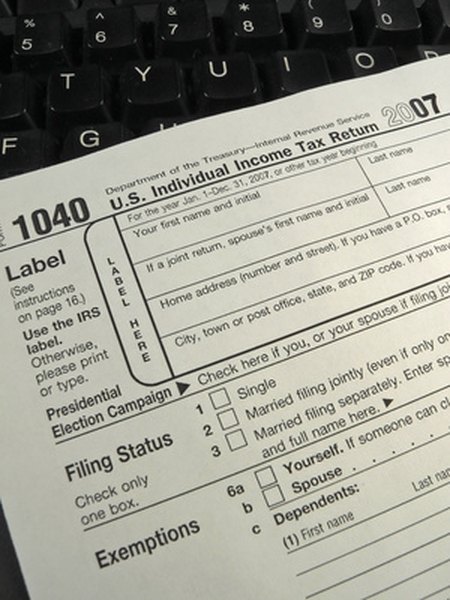Tax Laws About Donating Clothing
You must itemize your deductions to claim charitable contributions.
tax forms image by Chad McDermott from Fotolia.com
Contributing to a worthwhile charitable organization benefits all parties involved. Not only are you helping your neighbors from across town and around the world, but you get a tax deduction to boot. If your contribution involves giving clothing to a qualified charity, you get the added benefit of uncluttering your closet. While the Internal Revenue Service allows you to write off your contributions of clothing, it does have some specific rules for how to report your donations.
Place a value on the clothing items you wish to donate. The recipient organization cannot do this for you. Any used clothing you donate must be in good condition, with one exception. A high value clothing item may be in less than good condition if you claim a deduction of more than $500 for the item and you include a qualified appraisal for the item when you file your federal income tax return. You can only claim the fair market value for your donations of used clothing. The IRS notes that while there is no particular formula for determining fair market value, it is typically far less than the retail price of the item when it was new. The IRS recommends using the price you would pay for the item at a thrift store.
Step 2Take your clothing items to an appropriate collection site for a qualified charity. Organizations that qualify to receive tax-deductible donations include those whose purpose is religious, educational, charitable, scientific or literary. Organizations dedicated to the prevention of abuse of children or animals, those that foster amateur sports competitions, certain fraternal organizations, governmental agencies, veteran's organizations and nonprofit cemetery organizations also qualify if they are registered with the IRS.
Step 3Get a receipt that includes the name of the charitable organization, the date and location of your contribution and a description of the donated property whenever it is practical to do so. The IRS recommends getting a receipt on all non-cash contributions regardless of the amount of your donation but notes that a receipt is not required for donations of less than $250 if it is impractical to get one. For example, you don't have to get a receipt if you place a bag of clothing worth $50 into an unmanned drop-off box. You must get a receipt if your donation is $250 or more.
Step 4Complete Schedule A, Itemized Deductions, of Form 1040. You can only claim your charitable donations if you itemize your deductions. You might want to figure your taxes using both the itemized deductions method and the standard deduction method to see which will provide you with the lowest tax obligation. If your non-cash charitable contributions are more than $500 you must fill out IRS Form 8283. Add your charitable contributions to your other itemized deductions and enter the amount on Line 40 or Form 1040.
References
Resources
Tips
- Some charitable organizations that regularly accept clothing donations offer valuation guides to help you determine appropriate fair market value.
Writer Bio
Mike Parker is a full-time writer, publisher and independent businessman. His background includes a career as an investments broker with such NYSE member firms as Edward Jones & Company, AG Edwards & Sons and Dean Witter. He helped launch DiscoverCard as one of the company's first merchant sales reps.

